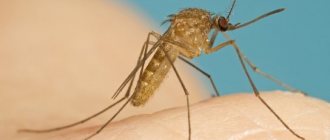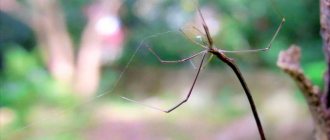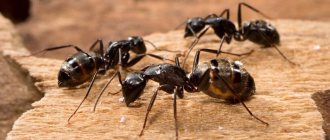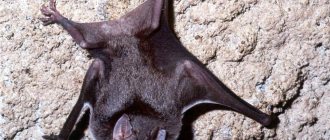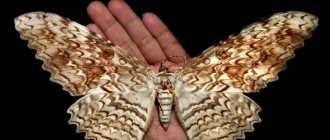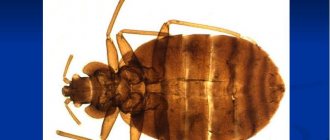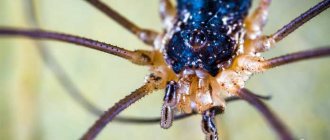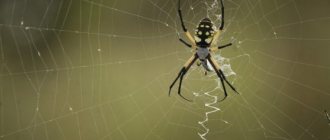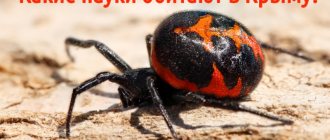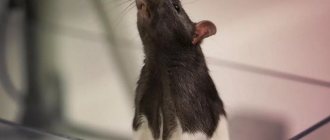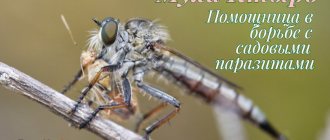The world of spiders is diverse. Spiders inhabit land and water bodies. They differ in size, color and behavior. Among them there are predators and completely harmless creatures. People know practically nothing about them, but are afraid or disgusted. Interesting facts about arachnids will help children learn more about them, as well as change their attitude towards these representatives of the animal world.
№1
The fact that there is a spider within 1 meter of you is a myth. However, there are still a lot of them. Scientists have identified more than 48,000 different species, which are distributed throughout the world, with the exception of Antarctica.
They are found in different parts of the planet, from deserts and jungles to swamps. They are also found in the mountains. For example, Euophrys omnisuperstes (Himalayan jumping spider) lives at an altitude of 6,700 meters above sea level. It was discovered on the slopes of Mount Everest.
A large number of tarantulas have been found in the Andes (one of the longest mountain systems).
Lifestyle and behavior
In 3rd grade environmental lessons, students can learn many interesting facts about the life of arachnids. To talk about spiders, you can use the following information about the habits and lifestyle of spiders:
Most arachnids lead a sedentary lifestyle. They build their own home, which can be of several types:
- Minks. They are dug in soft soil. They serve not only as a habitat, but also as a reliable refuge from enemies. Spiders leave it in the evening or at night.
- Tubes This is a shallow vertical burrow, the walls of which are lined with cobwebs. The entrance to it may have the shape of a funnel. Such a dwelling is used as a means of hunting.
- Tires. A special superstructure in the form of a movable lid or door that closes the entrance to the outside. Spiders camouflage it with sand or leaves.
- Caps. This is a lair that resembles a spider's web in appearance. It is located in the center of the network. Sensing danger, the spider hides under it and closes the entrance with a piece of web.
Arachnids are known for weaving trapping webs. But not all varieties have this ability.
Scientists have made several attempts to reproduce it in the laboratory, but the experiments were unsuccessful.
Despite weightlessness, the web has high strength. It is so strong that it is several times superior to the materials used to make body armor. If the thickness of the thread is increased to the diameter of a pencil, it will be able to stop a plane.
The web is lightweight. A thread of spider web, the length of which is equal to the Earth's equator, will weigh only 340 grams.
The outside of the fishing net is covered with a special liquid to which small insects stick. However, the spider moves along it freely. This happens thanks to the hairs that cover the spider's legs and reduce the contact area.
Some species hunt like true predators, attacking their prey.
Arachnids are good hunters who can track prey for several hours.
Singapore spider , in order to distract the attention of predatory wasps, builds a copy of itself out of garbage. This protection allows him to quickly escape from his pursuers.
Some species of arachnids can jump well. In this way they cover long distances. As they jump, they spread webs to help them land accurately.
Water spiders are able to stay under water for a long time. To breathe, they form a large bladder filled with air.
The gladiator spider, which lives in Australia, weaves a square-shaped bag from its web. He sneaks up on the victim unnoticed and throws a net over him.
№4
Many have heard that the female karakurt (belongs to the species of black widows) eats her male after mating. However, this does not always happen. Sometimes the male manages to escape, sometimes the female does not show aggression if she is well-fed. But with the so-called “red widow”, also known as Bishop’s widow (also a type of black widow), the situation is different. After mating, the male offers to eat himself, trying to get into his partner’s mouth. If she refuses, he will put himself in her mouth until she eats him.
How a spider weaves a web
The ability to spin webs is a property that attracts special attention to spiders.
Initially, the web is a liquid protein mass produced by special glands. It hardens very quickly in the air and turns into the finest and very strong threads. They are coated with a special adhesive composition that prevents prey caught in the net from escaping.
For a spider, a web is not only a trap for finding food, but also a means of transportation (on a web it descends from a height, flies from place to place) and a way to find its home. Some spiders weave webs around both the walls of their burrows and the cocoons in which they lay eggs.
The web is not always sticky: if the spider does not intend to use it to catch prey, it releases a dry thread
Also, each type of spider weaves its own form of web - from it, scientists can, without seeing the animal, understand who they are dealing with.
Geography courses for children 6-13 years old
In the online course “Amazing Planet” we introduce children to the most important places in Russia and the world in a fun format through games, stories and riddles
find out more
№13
Karakurts (black widows) exhibit strong sexual dimorphism. The female is much larger than the male. Moreover, only the female poses a danger to humans, as she is poisonous. Males are completely harmless.
Also, only female karakurts build nets and catch prey, as other species do. Males lead a different lifestyle. The whole point of their existence is to find a partner to mate with.
Dangerous and poisonous
The most toxic is black widow . They are several times stronger than the venom of a rattlesnake.
The venom of the Brazilian spider is not always fatal. Its bite is dangerous for men because it has a negative effect on potency.
A small banana spider can paralyze muscles and respiratory organs. He injects poison if he is in danger.
Kipling's Bagheera is a species of arachnid that feeds exclusively on plant matter. Spiders eat leaves, and in rare cases they can feast on insect larvae.
Most of the world's population is obsessed with the fear of spiders. The usual image of an arachnid can cause horror, rapid heartbeat and panic. This painful condition is called arachnophobia. You should be aware that most spiders found in the house will not survive if released because they have adapted to living in certain conditions.
Schizomids - miniature cave dwellers
Photo: Marshal Hedin
These small animals (less than 5 mm) inhabit caves, leaf litter and soil in the tropics and subtropics. They are not very well studied, but most systematic studies place Schizomida in the sister group of Thelyphonida.
These tiny animals have no eyes , and their first limbs are transformed into sensory organs with which they sense the environment. Their pedipalps are well developed, but can only move vertically. If you look closely, you can also notice that their cephalothorax is divided into two plates.
About individual varieties
Each spider is interesting in its own way; in almost any representative of this species you can find some interesting feature unique to it. However, there are some specimens of the order of arthropods whose lifestyle and habits deserve special attention.
Interesting facts about the life of some arachnids - using the example of 10 species:
- White Lady - despite the romantic name, this hunter is distinguished by increased aggressiveness, rather large size and almost completely white color. The desert dweller has very sensitive paws, by touching which he creates vibrations and thus transmits information to his fellow tribesmen. This is an insidious individual that can wait for a victim for hours while lying in ambush. An interesting fact about the white lady spider - the desert hunter’s home is always covered with a “door” made of cobwebs; it does not move further than 5 meters from it. The predator hunts at night. The spider's diet is varied - from insects to small reptiles. The arthropod can travel long distances only in search of a mate during the mating season. Females of this species are especially unfriendly during this period, so the male runs the risk of simply being eaten without completing his mission.
- One of the most beautiful representatives of arthropods is the peacock spider. It belongs to the racehorse family. The male's body shimmers in different bright shades. When he performs a mating dance, designed to attract the attention of a female, his body lifts up. From the outside it looks like the spider has spread its tail like a peacock. This is a small specimen, approximately 4 mm long, which has excellent vision. The dances of the peacock spider look quite funny, but are associated with a high degree of risk - females often feast on gentlemen. Well, if the male is lucky, he remains alive, then after love pleasures he immediately goes in search of a new lady of his heart. Each male has his own individual pattern on his body.
- This dangerous predator has a quick reaction, is very aggressive and is in constant motion. An interesting fact about the Brazilian wandering spider - it is listed in the Guinness Book of World Records as the most poisonous arachnid on earth. This species prefers an active attack. When it sees a victim, it takes an attacking position and raises its front legs high, while swaying from side to side. Death from a bite occurs in 85% of cases; the poison acts especially quickly on people with weakened immune systems. A person suffocates from paralysis of the respiratory muscles after 2-5 hours, children die even faster.
- Most often, people come across the cross spider, which has characteristic cross-shaped spots on its back. It can be found anywhere, even in an apartment. This species is useful because it destroys harmful insects, even those that may pose a danger to human health. The spider has a rather peaceful character; its web has healing properties. An interesting fact about the cross spider: after mating, the male always dies, and the female begins to create a cocoon for her offspring. She carries it on her back for a while, but then hides it in a secluded place.
- Famous black widows are found all over the world. Their bite is extremely dangerous to humans. The spider's venom can be fatal to children, the elderly and people with weakened immune systems. Arthropods prefer to crawl into people's homes and hunt there. The spider received this name for a reason - females of this species prefer to bite the male immediately after copulation. During the day, the female can eat up to 20 unfortunate gentlemen.
- The Madagascar spider Olios coenobita settles in empty snail shells, which it hangs half a meter from the ground. Such a dwelling exceeds the weight of the occupant by about 20 times, so to solve this problem, the arthropod very successfully uses its web as a lifting rope.
- The goliath tarantula Theraphosa blondi is considered one of the largest spiders in the world. Its diet consists of lizards, birds, rodents, frogs and even snakes. The entrance to his home is always closed with a dense barrier of cobwebs. The spider lives in a rather deep hole. About 820 species of tarantulas are known to science, some of which people keep as pets. The arthropod itself is distinguished by its very large size (up to 30 cm, taking into account the length of its legs), and has a calm disposition. In terms of the degree of danger to human life, the venom of this spider is comparable to a bee sting. An interesting fact about the tarantula spider - females of this species are considered long-lived (12 years); there are cases when the age of female Theraphosa blondi reached 30 years. Males do not live long, up to about 3 years.
- An individual with an unpredictable character is the phalanx spider, which is also known as the salpuga, bihorca, and camel spider. This is an omnivorous and incredibly voracious representative, ready to eat everything that moves and often attacks prey that is significantly larger than it. They eat poisonous scorpions, lizards, termites, chicks, young rodents, and also destroy beehives and fairly durable termite mounds. The phalanges can even attack each other, especially fertilized females. As long as there is food in the field of view of this arachnid, it will stop at nothing until it eats everything.
- The Australian funnel-web water spider has a notorious reputation for attacking human legs. During the mating season, this species becomes especially vicious. In search of a female, spiders comb their habitat and violently attack everything that is not a spider, including human legs. Representatives of this species are endowed with strong jaws, which can easily bite off a toenail or even a fragment of a finger. The spider has an iron grip - if its jaws are closed, then it will have to be torn off from its prey in the literal sense of the word.
- Another unique spider is Porsha. It is called the most intelligent predator among arthropods. He is believed to have intelligence. Scientists have found that when tracking prey, he uses different hunting skills each time. He attacks the victim with a wide variety of methods. It is not possible to detect his traces on the web, since he weaves a web only when he wants to catch another spider, imitating its weaving style.
An interesting fact about the Japanese spider crab is that it is a representative of a species of crustacean, although its name hints at its relationship with spiders. These individuals live exclusively off the coast of Japan. Their size is impressive - the paw span reaches 3 meters, and the body is 80 cm in length. The weight of the largest crabs is recorded at 20 kg. In young animals, the meat is suitable for consumption; in older animals (10 years or more), it has an unpleasant aftertaste, since they prefer to eat carrion.
An interesting fact about spider crab development is that their limbs continue to grow throughout their life cycle. The body stops growing after 12 years, so the older the individual gets, the more spider-like it becomes. The paws of this crab have remarkable strength and can cripple inexperienced fishermen. This arthropod is a long-liver; crossing the half-century mark is not a problem for it. There are also strong suggestions that the spider crab, if not caught sooner, could even live 100 years.
Unusual species
The species Cebrennus rechenbergi lives in Morocco. Its peculiarity lies in its method of movement - thanks to the triggers over its head, this creature is capable of reaching a speed of about 2 m/s and easily overcomes not only descents, but also ascents.
Representatives of the order Araneomorphae are sometimes difficult to distinguish from ants. Moreover, they use their resemblance to these insects not only as a defense mechanism, but also for hunting. Araneomorphae enter the anthill by raising their two front legs, thereby imitating antennae.
The spider Cyclosa mulmeinensis has found an amazing way to protect itself from wasps. He makes a copy of himself from scrap materials and places it in a visible place. Arachnids also live in the water element. For example, the species Argyroneta aquatica uses an air bubble to breathe, which it first encloses in a cocoon of spider webs.
What they all have in common are four pairs of legs and the absence of antennae.
Like all arthropods, arachnids have articulated legs, a segmented body, and a hard external exoskeleton. Anatomical features common to all arachnids also include:
- four pairs of walking legs originating from the cephalothorax;
- two body parts or "tagmata":
- prosoma (cephalothorax) , which contains the oral apparatus, many sensory organs, including the eyes, as well as the segment to which the limbs are attached;
- The opisthosoma (abdomen) contains the digestive, reproductive and respiratory organs. This is also where spiders have organs that produce silk for their webs;
- a pair of articulated jaws with fangs called chelicerae (from the Greek heli, meaning claw);
- a pair of antenna-like pedipalps that resemble small “handles” located on either side of the mouth.
Unlike other arthropods, arachnids lack antennae and wings . Although some spiders can jump relatively long distances, and others are carried through the air on silk threads, no arachnid is capable of true flight. Insects are the only invertebrates that can fly.
Ricinulei - the rarest arachnids
Photo: Marshal Hedin
This is an order of arachnids with a small number of species, with only about 55 described species worldwide. It is also striking that they were discovered in fossil form before the first living specimen was found in the tropics. However, ricinuleids also have a number of anatomical and behavioral features that make them quite interesting:
- they are eyeless;
- the front shell forms a movable hood (“pumpkin”). When the hood is lowered, it covers the mouth and chelicerae, which end in claws. The female carries her single egg under this hood, demonstrating a kind of maternal care;
- the eggs hatch into six-legged "larvae" similar to ticks;
- the pedipalps are small and end in tiny claws;
- in males, the legs of the third pair become copulatory organs used for spermatophore transfer.
Palpigrades are one of the most primitive orders of arachnids
These tiny arachnids (less than 3mm) usually live in moist soil under rocks. Very little is known about their biology; scientists only identify several distinctive anatomical features of palpigrades:
- lack of eyes;
- thin and light covers;
- the cephalothorax is divided into two plates between the 3rd and 4th legs;
- pedipalps are adapted only for movement;
- the segmented abdomen is broadly connected to the cephalothorax;
- a movable flagellum extends from the end of the abdomen;
- some species have three pairs of "book lungs" ; others do not have separate organs for gas exchange and probably breathe through the cuticle.
Photo: gernotkunz
About 80 species from southern Europe, Africa, Southeast Asia and America have been described. Most species have been described only recently. It has been suggested that palpigrades are not entirely terrestrial , because the species Leptokoenenia scurra from coastal regions can swim in seawater. However, this conclusion is controversial because palpigrades have sensory trichobothria (hair-like structures) that function only in the air space.
Pseudoscorpions are the most secretive arachnids with claws like a scorpion.
These small arachnids (usually less than 5mm in length), otherwise known as "false scorpions", are similar in appearance to the larger true scorpion but lack the elongated metasoma (tail) and telson (sting). They are usually quite dull in color , ranging from reddish brown to black. Many of them are dorsoventrally compressed (flattened), allowing them to hide in small crevices, keeping their long grasping pedipalps out in anticipation of prey.
Photo: Alice Abela
There are just over 3,000 described species of pseudoscorpions, and they are found in most regions of the world. Pseudoscorpions demonstrate highly developed maternal care, in which the female “feeds” the offspring. Pseudoscorpions also have silk glands located on the chelicerae. Silk is used to create winter nests.
Several species (such as the neotropical Cordylochernes scorpiodes) often hitchhike , clinging to other larger arthropods (such as harlequin beetles) to move to new habitats. Another species (Paratemnoides elongatus) practices cooperative predation and building cooperative nests.
Arachnids are one of the four main groups of arthropods
The other three main groups are insects, crustaceans and centipedes. Insects are well known for their diversity of species, but scientists now recognize that Acari (mites) clutches may contain up to a million species (although most have not yet been described). Spiders also have a rich fauna, with over 43,000 described species. The remaining nine orders of arachnids contain much fewer species, but have a greater diversity of body shapes, habitats, lifestyles, physiology and life cycles.
However, if you go far enough down the family tree of any living arthropod, you'll eventually end up with the same animal. The common ancestor of all arthropods lived hundreds of millions of years ago .
Lessons from the world around us
It is generally accepted that you need to beware of spiders. But there are more than 42 thousand species of arachnids in the world, many of them are completely harmless. Some spiders live next to people even in houses, without causing any harm to its inhabitants. Poisonous arthropods, which must be seriously guarded against, are found only in the wild.
Already from the 2nd grade, students have the opportunity to learn a lot of interesting things about arachnids. Getting to know spiders and their characteristics occurs through stories, reports, and messages. A story about spiders in grade 2 on the world around us consists of the following information:
- characteristics of arachnids;
- features of the internal and external structure;
- diet;
- reproduction;
- life expectancy.
The program of the surrounding world is rich in examples and interesting facts from the life of arthropods. As a rule, information is quite accessible and understandable to a child in grade 2. In addition, students are encouraged to learn a lot of new and interesting things that will be useful for writing an essay on this topic.
